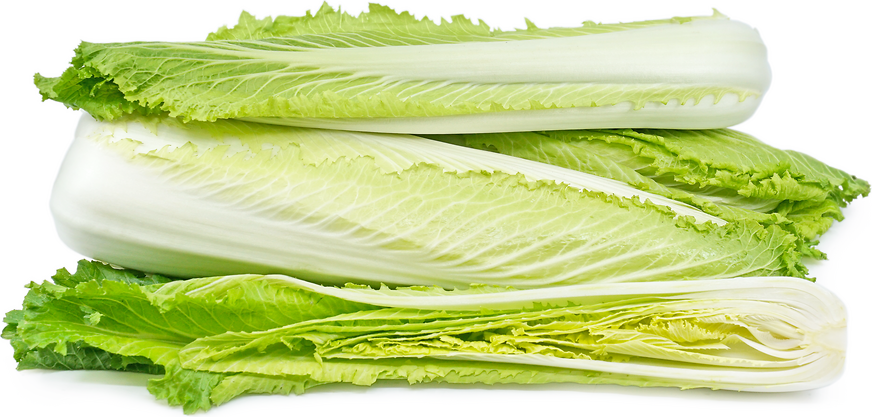


Michihili Napa Cabbage
Estimated Inventory, lb : 0
Description/Taste
Michihili napa cabbages are elongated and upright heads, growing up to 43 centimeters in length and 15 centimeters in diameter, and bear a cylindrical, narrow shape with open, frilled leaves at the top of the head. The leaves of Michihili napa cabbages have a crinkled appearance with serrated edges and are white at the base, transitioning into a light green hue at the tips of the leaves. The outer leaves are also darker green than the leaves encased in the center of the head. Each leaf has a large main rib with a crunchy yet tender texture. The best cabbage heads are solid and heavy, with few loose leaves on the outside. The taste of Michihili napa cabbage is fairly mild and sweet, similar to celery or lettuce, though Michihili tends to have a stronger flavor than other varieties of napa cabbages.
Seasons/Availability
Michihili napa cabbage is available year-round.
Current Facts
Michihili napa cabbage, botanically classified as Brassica rapa var pekinensis, is a variety of heirloom napa or Chinese cabbage that forms elongated heads. Napa cabbage is also known as Pe Tsai. Michihili napa cabbage is a specific cultivar of napa cabbage, though sometimes the name is used to refer to all tall, cylindrical Chinese cabbages. Michihili napa cabbages, and all napa cabbages, are more closely related to turnips and rutabagas than European-style green or red cabbages.
Nutritional Value
Michihili napa cabbages contain both soluble and insoluble fiber, which maintains healthy cholesterol levels and regulates the digestive tract. The vitamin C in napa cabbage, which starts to dissipate once leaves are cut, builds the immune system, while the vitamin K protects bones and the brain. Napa cabbages also contain smaller amounts of vitamin A, calcium, potassium, and other minerals.
Applications
Michihili napa cabbages can be used similarly to other varieties of napa cabbage. It can be eaten raw much like romaine lettuce—cut up into salads, used as wrap, or mixed into slaws. Michihili napa cabbages can also be cooked in various ways, including stir-frying, steaming, or simmered into soups. Napa cabbages are often fermented for kimchi recipes. The leaves take on the flavor of foods cooked alongside them, so they are especially good at adding texture to recipes while adding only a subtle flavor. Pair with other vegetables, meats, or poultry. Michihili napa cabbages do not store well for long periods of time and should be used as fresh as possible unless pickled.
Ethnic/Cultural Info
Many Americans may think the name “Napa” cabbage comes from the Napa region of California. In fact, the name is derived from the Japanese word for cabbage, nappa. The name Michihili napa cabbage, or Chihili as it is sometimes called, likely comes from the Chihili Province in Northern China, which is today called Hebei.
Geography/History
Michihili napa cabbage is native to Eastern Asia but grows best in cool climates around the world. They will also grow in warmer climates, forming a less-compact head. Napa-type cabbages were first cultivated in China at least 1,000 years ago and have a long history in East Asia. Chinese and Japanese immigrants brought napa cabbages to the United States in the early 19th century, though Michihili napa cabbage types were probably a later 20th-century introduction.

Recipe Ideas
Recipes that include Michihili Napa Cabbage. One
| JW's Farm |
|
Chinese Cabbage Soup |



